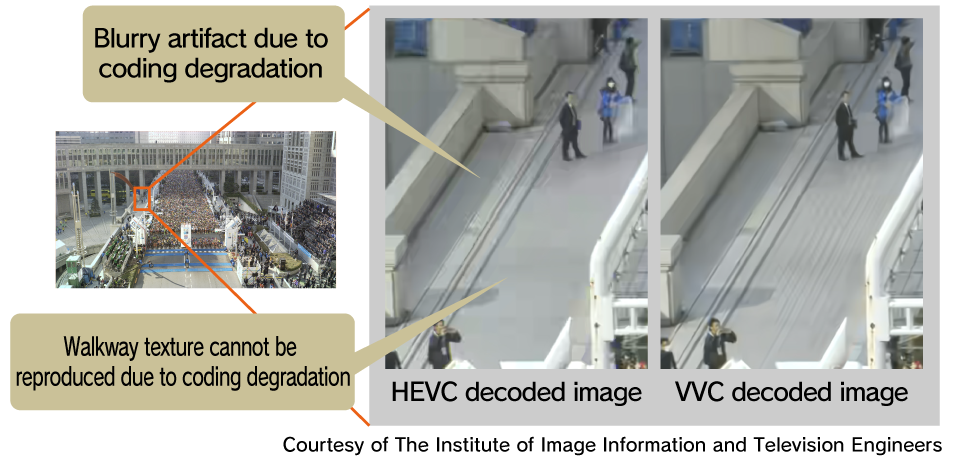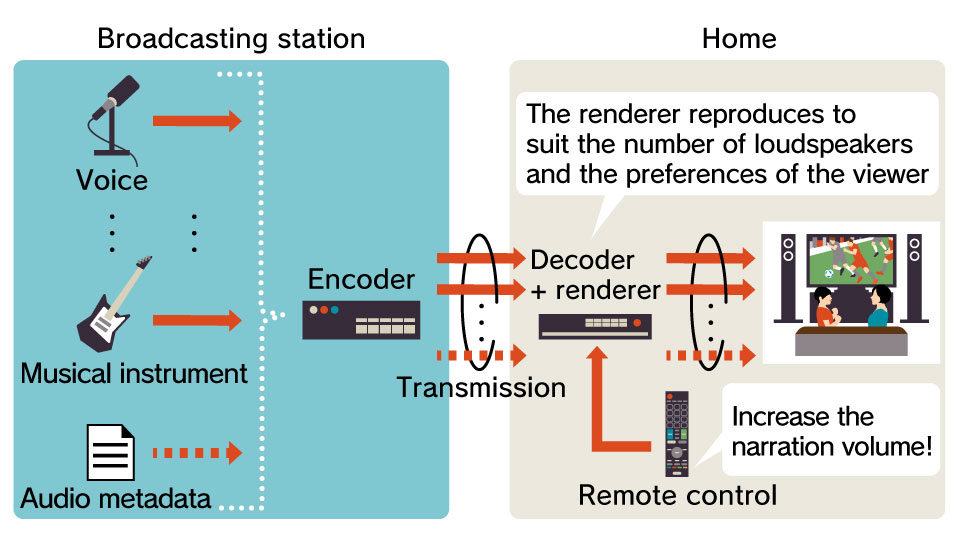Advanced Terrestrial Broadcasting Technology
Research into transmission technology for ultra-high-definition television terrestrial broadcasting

VVC (Versatile Video Coding)
VVC is a new video coding method that has been standardized internationally through the efforts of companies and research institutions from around the world. The first edition was finalized in July 2020. The need for video compression technology has been increasing with the spread of video streaming services, e.g., streaming over 5G networks and services in the IoT that involve video communications. VVC is a general-purpose coding method that also supports coding of HDR (High Dynamic Range) video and omnidirectional (360°) video in addition to conventional SDR (Standard Dynamic Range) video.
Compared with the HEVC (High Efficiency Video Coding) method that is used in satellite broadcasting for ultra-high-definition television (UHDTV) service, VVC reduces the transmission rate by around 40% for the same coding quality, as shown in the table below. Furthermore, it provides higher image quality for the same transmission rate, as shown in the figure below.
| Video resolution | Encoding performance improvement |
|---|---|
| 4K (2160p) | -44.7% |
| 2K (1080p) | -41.7% |
| Encoder computational complexity | Around 8.0 times |
| Decoder computational complexity | Around 1.6 times |

Real-time audio encoder/decoder using the MPEG-H 3D Audio BL profile
MPEG-H 3D Audio is an audio coding method that supports object-based sound systems*1. It makes it possible for the viewer to customize their viewing experience by, for example, changing the volume of narration or switching to a preferred language. In our investigation of advanced terrestrial broadcasting, we employed the BL profile, which is the latest profile*2 that has a lighter implementation load compared with the LC profile. We developed a world-first real-time audio encoder/decoder at level 4 in supporting 22.2 multichannel (22.2 ch) sound and have been investigating its practicability.


| Item | Specifications |
|---|---|
| I/O interface | MADI (AES10) |
| No. of audio inputs | No. of audio inputs Max. 56 ch (Example: 22.2 ch background sound + 12 languages) |
| No. of audio outputs | Max. 24 ch (Example: 22.2 ch sound) |
| Input audio metadata | Input audio metadata Serial representation of the Audio Definition Model*3 |
| Multiplexed streaming format | MMT/IP |
| Audio formats that can be rendered | Mono, stereo, 5.1 ch, 7.1 ch, 22.2 ch, 5.1.2 ch, 5.1.4 ch, 7.1.4 ch*4 |
| Bit rate | 22.2 ch sound can be compressed at 512 kbit/s*5 |